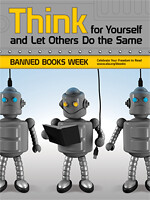A Novel Of Suspense
Laurie R King
A whodunnit by an author who is new to me, The Art of Detection, is set in San Francisco in 2004 and 1924. The book is from the middle of a series featuring SF police detective Kate Martinelli.
King cleverly intertwines a "lost" Sherlock Holmes short story, purportedly written by Arthur Conan Doyle while visiting San Fransisco in the '20s into the story of the murder, in 2004, of a collector of Sherlockia and member of a Sherlock Holmes themed dinner club. The Sherlock Holmes story, prominently featured in the liner notes, is what drew me to this book. It is also a major clue to the 2004 murder. |
King has written another series of books, set in the 1920s which are centered around a character, Mary Russell, who is apprenticed in the art of detection to the retired Sherlock Holmes, who is living the life of a beekeeper in Sussex. This is actually where Doyle leaves Holmes after unsuccessfully killing Holmes in a battle with his nemesis, Professor Moriarity, at Reichenbach Falls in The Adventure of the Final Problem.
His fans would not let Doyle stop writing Holmes stories and Doyle was forced to bring the character back to life, rather like Mr. Spock in the movie Search for Spock. This begs the irrelevant question, is Spock Sherlock Holmes?
Appropriately, the novel and the short story both deal with issues of homosexuality, gays in the military and same sex marriage. What else is there to write about in San Francisco in 2004? Fortunately, King did not choose to make Sherlock Holmes gay in her "lost" story. The gay issues are dealt with in a tasteful an inoffensive way.
King has done her Sherlock Holmes research and there is much Holmes and Doyle trivia to be gleaned in The Art of Detection. Did you know that Doyle never had Holmes say "Elementary my dear Watson" or smoke a calabash pipe?
There are two fictional murders to solve in The Art of Detection, separated by 80 years. Who committed them? Don't ask don't tell.










